Two weeks after its launch in November 2022, ChatGPT was rightfully prophesized as the tipping point for AI by a Harvard Business Review article. The end of 2022 marked the beginning of an AI-influenced world. It was not just the core language model that popularized ChatGPT, but the application experience offered around GenAI catapulted its omnipresence, including its widespread adoption in enterprises.
In our recent webinar titled ‘Transforming Decision Intelligence: The Next Frontier with AI & GenAI’, a panel comprising experts across Forrester, Tiger Analytics, and Mars shared that they conducted a survey in mid-2023 with 275 enterprise technology leaders, showing that more than 50% of them were in the GenAI experimentation and expansion stage for their business use cases. Furthermore, it has been identified that CIOs and other tech leaders are using GenAI to advance budgets in their projects successfully.
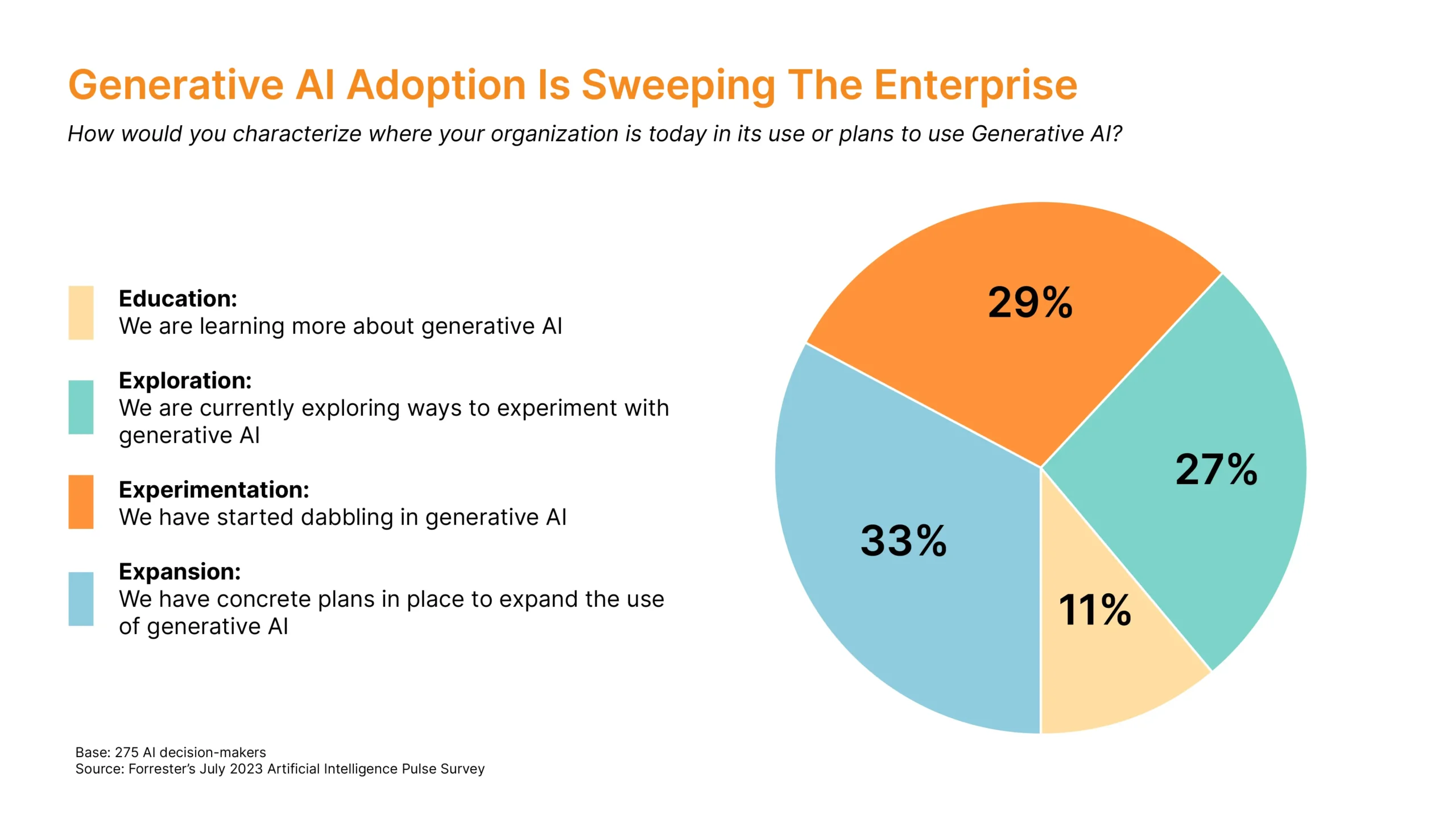
Practical GenAI Use Cases That Are Becoming Popular
It’s been a year since ChatGPT sparked the permeation of GenAI in enterprises. According to our webinar’s expert panel, enterprises are getting more nuanced in their approach to business use cases. Most GenAI use cases are indeed industry agnostic. Still, a few verticals, like high-tech, retail banking, pharma, telecom, and e-commerce, are already on their way to benefiting extensively from AI applications.
Pharmaceutical companies use GenAI to cull out insights from their massive data and report repository and use them to assess the implications of drug launches in new markets. GenAI is employed to improve customer search queries in the e-commerce sector. The summarization of lengthy call center transcripts for analytics, and AI copilots acting as assistants to call center agents are other noteworthy use cases gaining traction.
Amid the plethora of GenAI use cases, experts believe two categories emerge as the most popular: employee experience and customer experience enablement. Enterprises have been investing in empowering their employees with GenAI applications, ultimately helping to boost productivity.
Top GenAI use cases
- Enhancing employee experience
- Enhancing customer experience
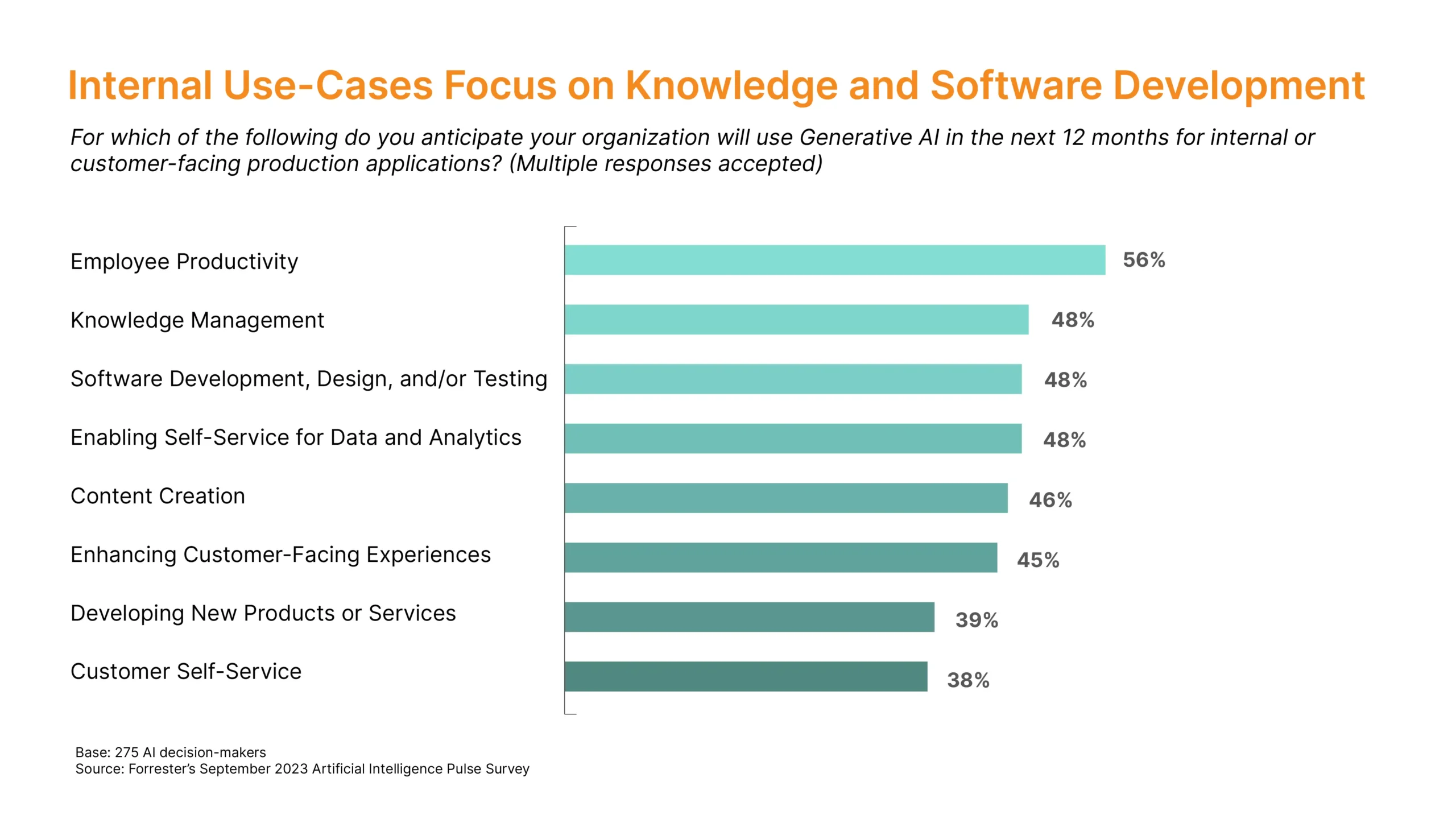
Impact of GenAI on Employee Experience
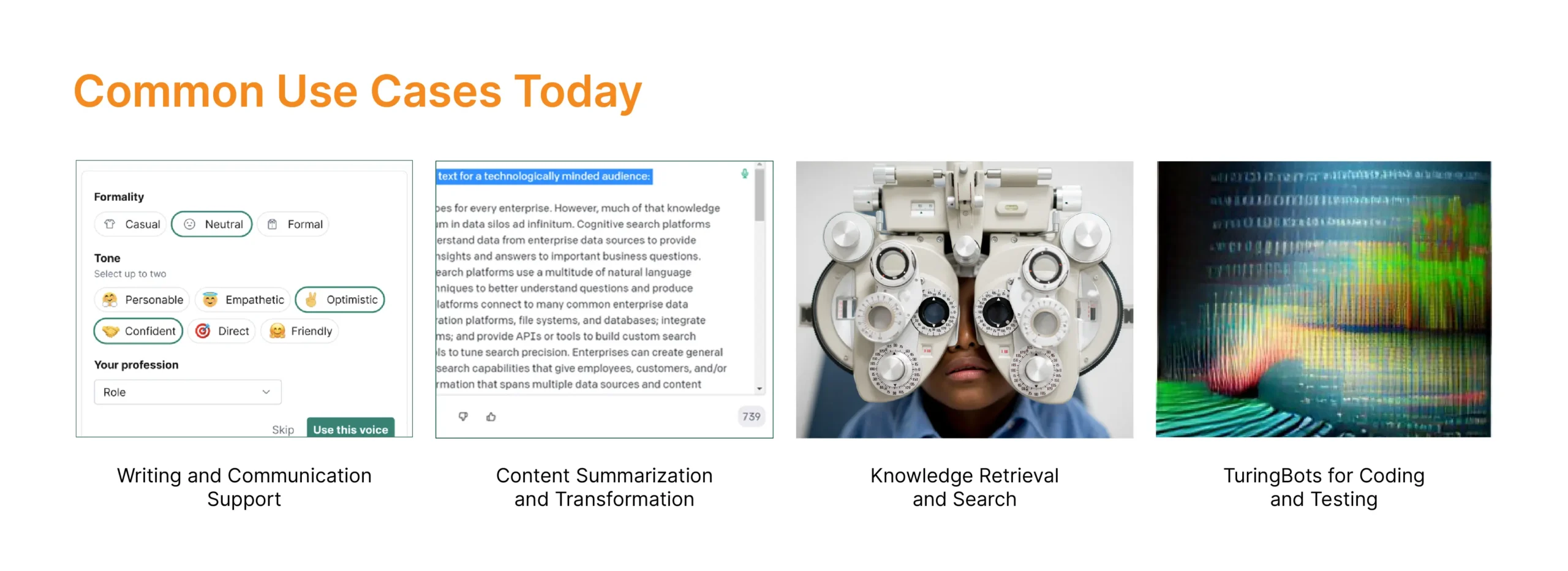
-
Writing and communication support
Enterprises heavily depend on productivity tools. We’ve found that the most common use cases include writing and communication support. Right from converting a few bullet points into a customer communication email or creating a specialized report by feeding in business meeting notes – routine, BAU communication has been made more efficient. Here’s where Large Language Models are used for organizing data, content summarization, and transformation. We’ve seen that language models are often combined with JSON technologies to enhance data searches and unearth semantically relevant information, helping enhance the quality of output. -
Coding and testing
Enterprises take a couple of approaches to acquiring an AI model for coding and testing. A few go with the open-source model and add customization through fine-tuning datasets. They also depend on prompt engineering and vector databases for information grounding. Another approach is to utilize cloud-based API services to access large language models from cloud providers. Finally, enterprises that want to avoid building capabilities from scratch choose AI-embedded applications from application providers.It is vital to manage language model behaviors to receive intended outputs in an enterprise context. Retrieval Augmented Generation (RAG), a combination of language models and vector embeddings with a vector database, is a technique that is applied to achieve it. Increasingly, GenAI applications assure better user experience and accurate decision intelligence by allowing employees and consumers to interact with data models.
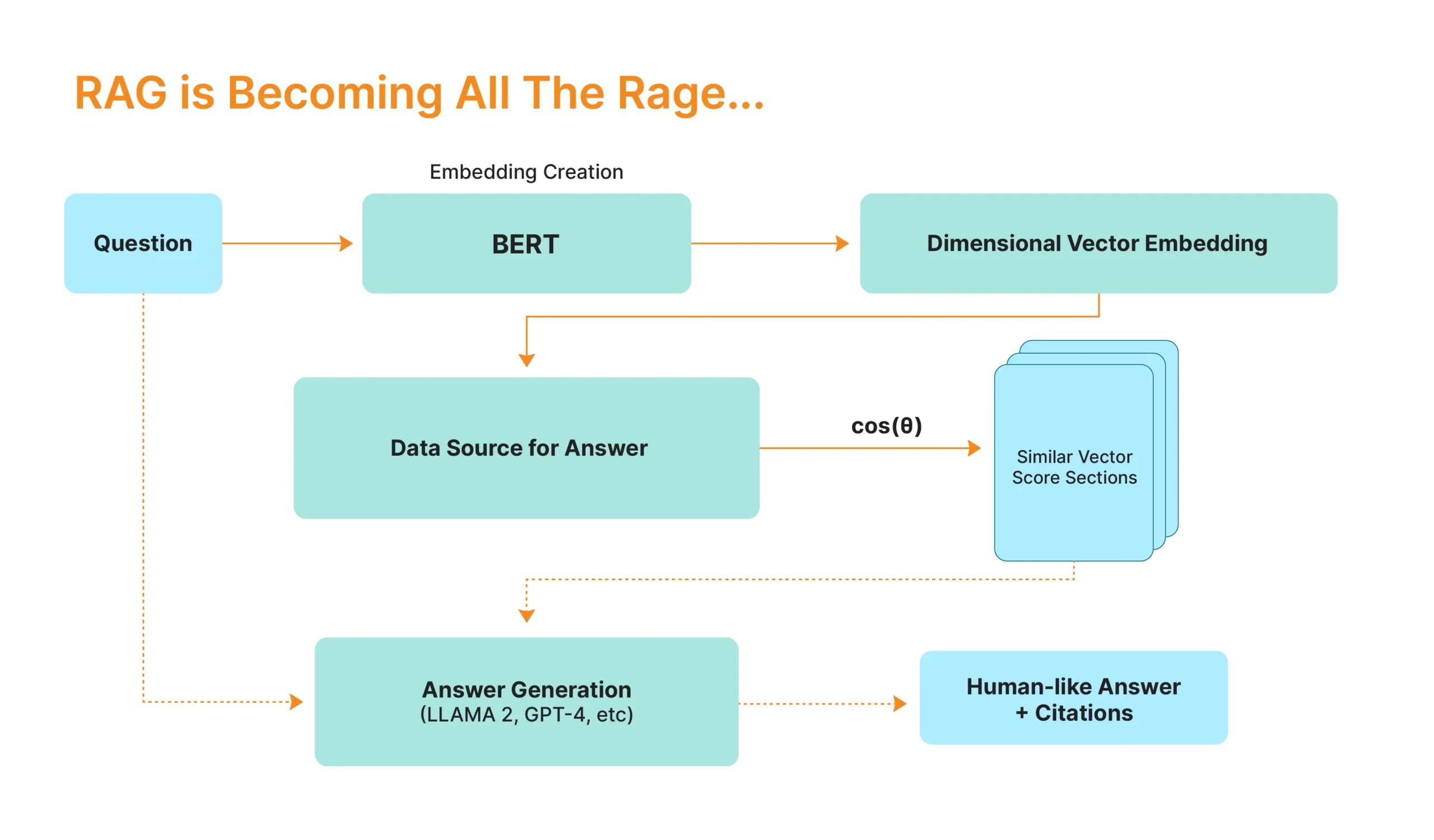
-
Application development and iteration
GenAI-driven application development can get complex in an enterprise environment by combining multiple models orchestrated by a coordinator model or a rule-based coordination set. The final implementation will have multiple databases designed with specialized models applied to them or vectorized to send back to the central coordinator model. Currently, many open-source and vendor-supported options are available for model orchestration and monitoring. Democratization of GenAI further propels the ‘bring your own AI’ concept among employees. So, in the future, enterprise application development will have to deal with a host of newer technologies.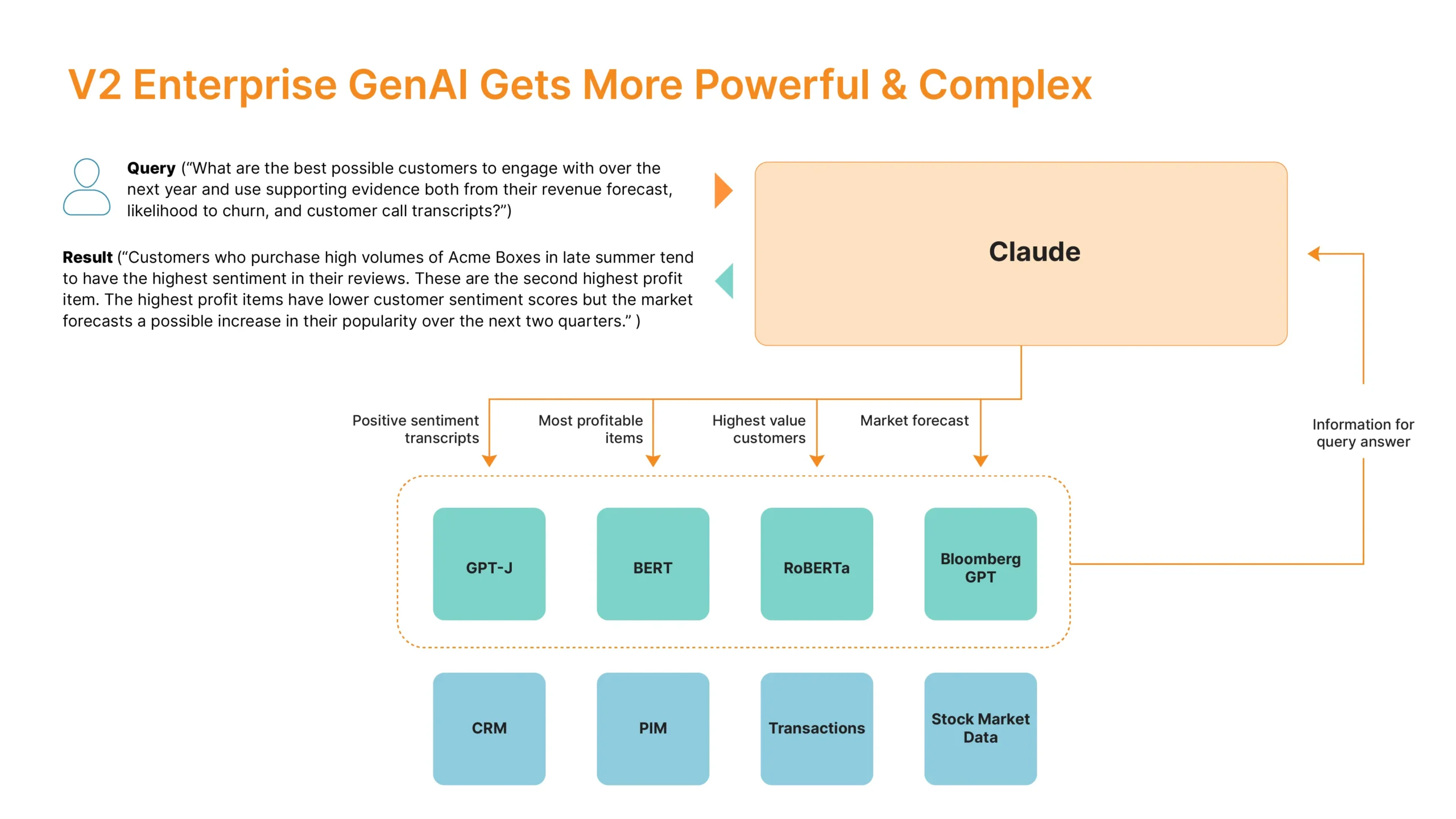
-
Migration of legacy codes
It is a nightmare for IT teams to phase out legacy codes and migrate them into the latest technologies. We’ve seen how telecom major AT&T has paved the initial path. They use large language models and TuringBots to migrate their legacy code into modern software architectures. By relying on LLMs to create converted codes and human developers to validate AI-generated software codes, they accelerate the transition process significantly. This secure transition opens avenues to offer new services as the modern architecture supports easier third-party system interactions.
Impact of GenAI on Consumer Experience Enablement
-
Customer service and support
One of the prominent GenAI use cases that saw success in 2023 and is likely to expand its dominance in 2024 is customer service and support. Enterprises are using gen AI to enhance agent capabilities and generate customer insights. In the telecom industry, GenAI summarizes tens of thousands of customer call transcripts daily, freeing up agents’ productive time. Large language models are built to extract critical insights about customers from call summary transcripts. -
Personalized marketing
In this consumer era, marketers know the significance of personalized content. However, personalizing marketing at scale is a challenge. GenAI is lifting that burden from marketers with AI-embedded applications offering intuitive content personalization and customer segmentation recommendations. For example, the e-commerce industry is redefining search queries to be more conversational and context-rich to profile and serve consumers better. -
Chatbot for customer support
Retail banking was at the forefront of introducing chatbots for customer support. Banks could answer more queries and resolve complaints instantly. At present, every industry aspires to repeat that chatbot playbook and improve customer service. With the ongoing research in semantic analysis of large language models, chatbots could distill conversations and predict customer preferences.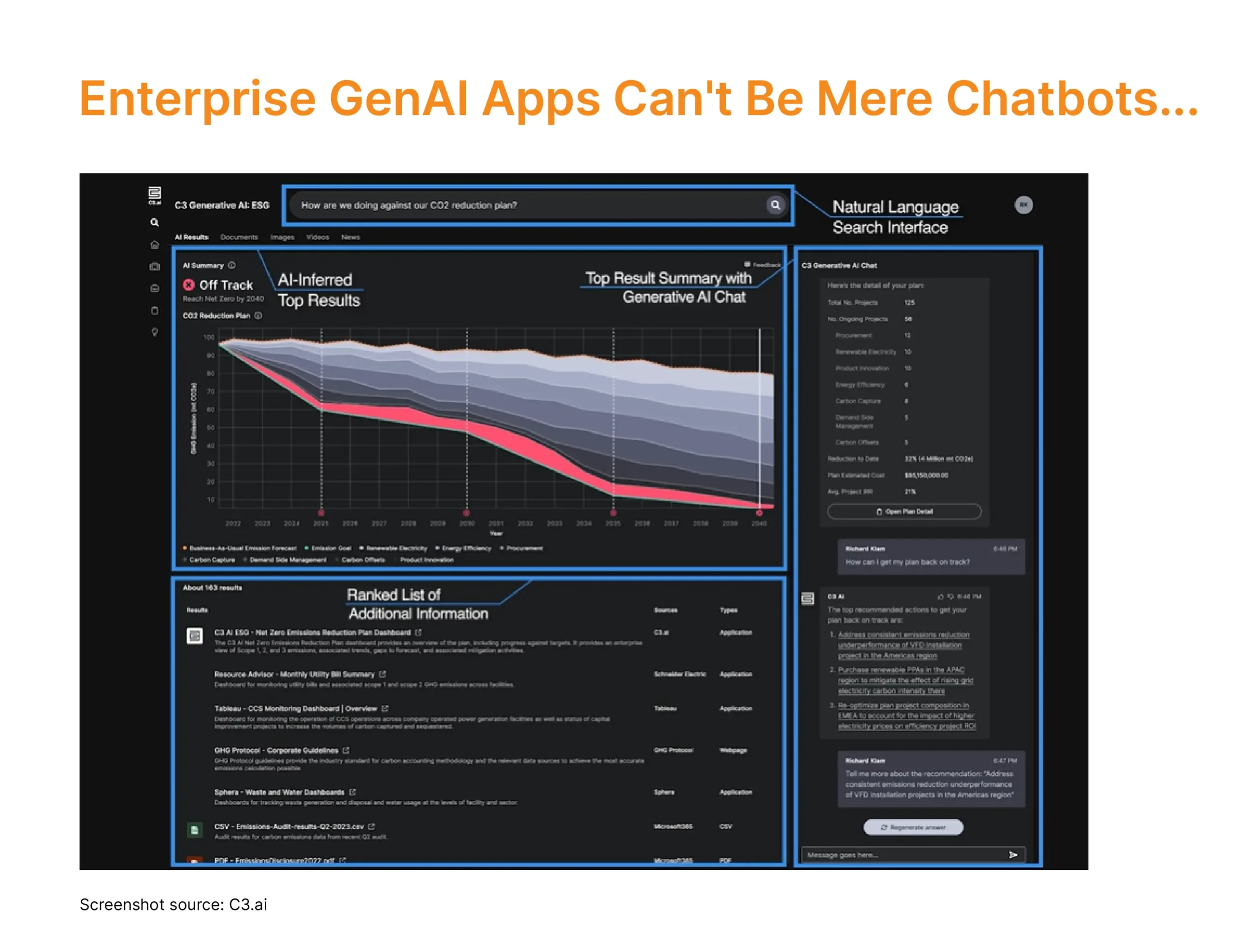
Even though GenAI offers enormous potential, enterprises must tread carefully before rolling out AI applications. A pilot study, followed by extensive internal user testing, should be part of the framework. The regulatory standards surrounding GenAI are evolving, so enterprises should adopt the ‘responsible AI’ approach by introducing baseline standards and principles.
With the adoption of GenAI, rethinking organizations’ internal processes will become a trend in enterprises for improved collaboration and decision-making. There will also be an amalgamation of multiple new technologies. Enterprises must also find a way to embrace the rising phenomena of the ‘Bring Your Own AI’ concept while balancing technical and business implications within their organizations.
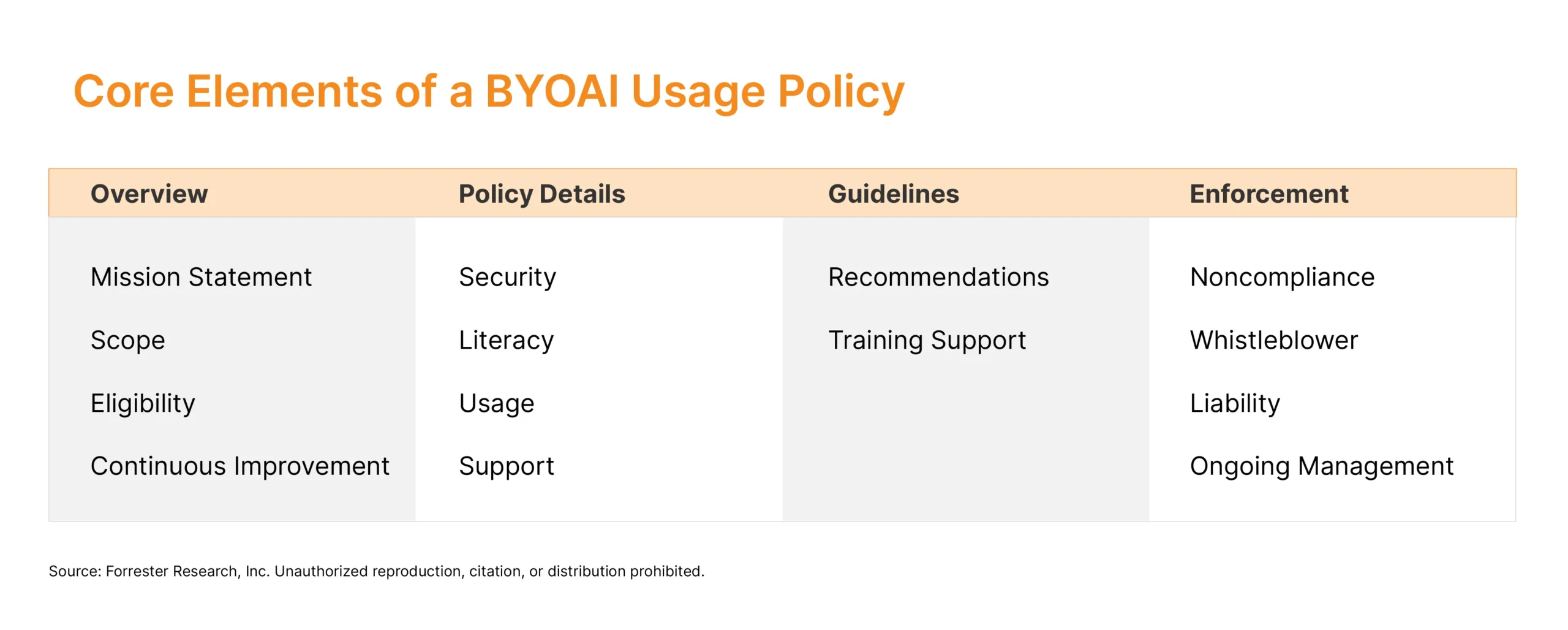
An explosive technology has been unleashed, and we are seeing the early real-life applications of GenAI. As AI-led tech continues to influence and inform our everyday lives, continuous research, multi-stakeholder collaboration, and engaging in participatory dialogues will shape the future of AI and GenAI and its implications.





